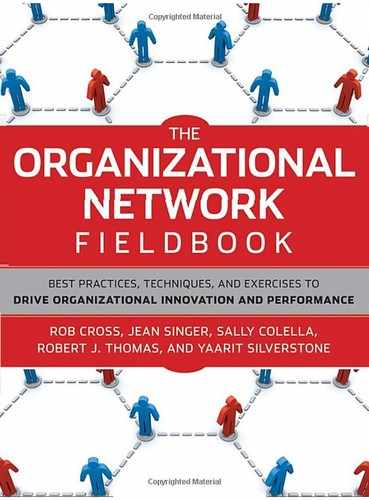Part V: DEVELOPING TALENT THROUGH NETWORKS
The ability to understand and work through organizational networks and to build effective personal networks has become a requirement for leaders in organizations of all kinds. That is why, as the contributors to this section emphasize, network issues must be included in all phases of talent management, from the onboarding of new hires to the preparation of high-potential employees for major leadership roles.
Michael Chavez and Mara Green describe three practices they use to help clients develop the mindset, skills, and tools to operate in today's complex business world. The practices include building strong, enduring ties instead of many superficial ones and using network analysis tools to develop an understanding of who key stakeholders are and how to reach them.
Rob Cross provides a template for an in-depth network presentation that he has used with high-potential employees at Fortune 500 companies. In the presentation, which is part of a broader leadership development program, he focuses on group connectivity as well as personal networks, drawing from his research on the network characteristics of high performers.
Katy Strei and Sally Colella write about a workshop they used at MedImmune, a unit of AstraZeneca, to help leaders identify and engage internal and external stakeholders—an approach that is particularly valuable during a change initiative.
Christie Dowling and Victor Gulas describe MWH's development of an informal mentoring program that helps employees get a feel for the company's culture and begin to build the relationships they need to be fully productive.
Carlota Vollhardt and Brigitte Lippmann focus on the importance of maintaining contact with external stakeholders. In their chapter, they describe how a global pharmaceutical company responded when an employee who had served as the bridge between the company and the World Health Organization announced his retirement.
Several contributors to this section focus on the network-building needs of new employees. Adrian (Zeke) Wolfberg writes about a program at the Defense Intelligence Agency that connects highly central people with those on the outskirts of the network—many of whom are newcomers. Betsy Hudson provides the agenda for a program in a government agency that helps integrate new hires into the organization. The goal of both programs is to bring new employees up to speed as quickly as possible.
Finally, Michel Buffet, Gregory Janicik, Maria Gallegos, Giulio Quaggiotto, and Lauren Ashwell provide detailed examples of onboarding exercises and more comprehensive onboarding programs that teach new hires at various levels to focus from the start on building and learning to manage an effective network. The result of such approaches is often increased productivity and job satisfaction for the new employees.
